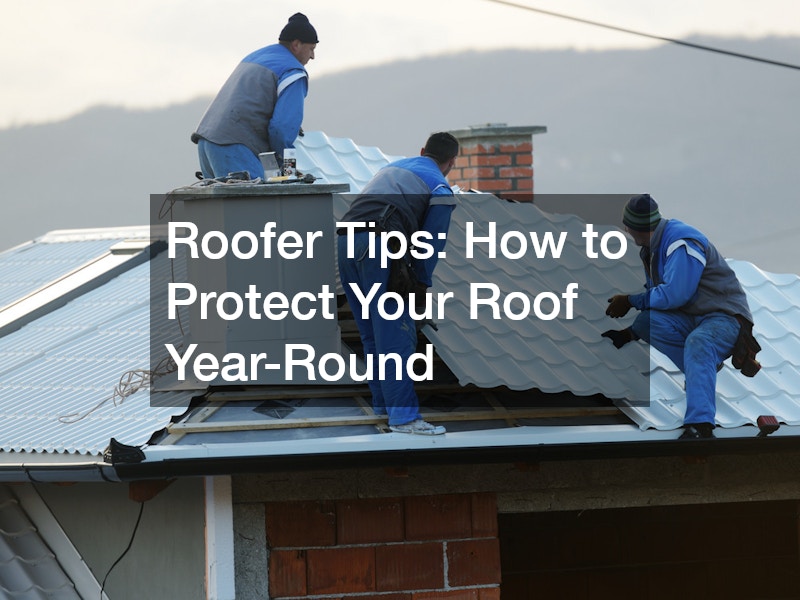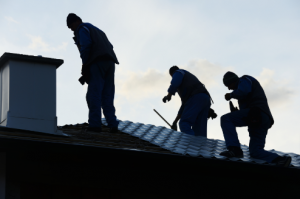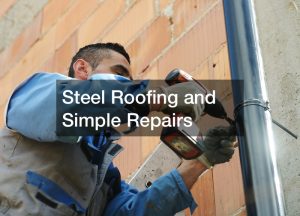Roofer Tips How to Protect Your Roof Year-Round
Your roof is one of the most critical parts of your home, protecting you and your belongings from the elements. It is essential to maintain and protect your roof throughout the year to ensure its longevity and effectiveness. In this article, we’ll explore essential tips and answer common questions about keeping your roof in top condition no matter the season.
Inspecting for Damage After Winter
Winter can be harsh on your roof due to snow and ice, creating potential for significant damage. The freeze-thaw cycles can lead to cracked shingles and ice dams which may cause leaks.
Conducting a thorough inspection as winter ends can help you identify and repair these damages early on.
Begin by examining your roof from the ground using binoculars, looking for missing shingles, and any visible structural damage. Pay close attention to areas where ice dams may have formed, as these are prone to water intrusion. Addressing these issues promptly can prevent minor cracks from developing into major leaks.
Prepping Your Roof for Spring Showers
Spring is known for its rain showers, which can exacerbate existing roof issues if not properly managed. Ensuring your roof is leak-proof needs to be a priority, especially focusing on areas vulnerable to water infiltration. It’s crucial to clean gutters and downspouts to facilitate proper drainage of rainwater.
Clogged drainage systems can lead to water backflow, potentially causing mold and rot in the supporting wooden structures. Inspect the flashing around chimneys and vents, as these areas are common culprits for leaks. Small problems, if ignored, can evolve into more severe issues when exposed to consistent spring rains.
Summer Maintenance and UV Protection
The summer brings with it intense heat and harmful ultraviolet rays, both of which can take a toll on your roof’s condition. Prolonged exposure to the sun can lead to faded, brittle shingles, decreasing their effectiveness in protecting your home. Applying UV-reflective coatings can mitigate these effects by reflecting solar energy away from your roof.
Regular inspections during summer can help catch early signs of wear and tear, such as cracking or warping. Consider using shingles that come with UV protection attributes for additional durability, as they can withstand intense sun better compared to traditional options. This proactive measure not only extends the life of your roof but also helps in temperature regulation of your home.
Choosing Durable Roofing Materials
Choosing the right materials for your roof can make a substantial difference in how well it withstands environmental stressors. Options like metal, slate, and asphalt shingles provide varied durability levels depending on the climate. Consider your local weather patterns while selecting materials, optimizing for resistance against common threats such as strong winds or heavy snowfall.
Metal roofing is known for its exceptional durability, with a lifespan that can exceed 50 years. Asphalt shingles are versatile and cost-effective, suitable for a variety of climates if properly maintained. Meanwhile, slate is highly resilient but can be considerably more expensive both in material cost and installation.
Sealants and Coatings for Extra Protection
Adding layers of sealants and coatings provides extra security against weather-induced wear and tear. Sealants are especially useful in sealing leaks and reinforcing shingles or other vulnerable areas, acting as a protective barrier against moisture. They can be applied on different roofing materials, improving overall resistance to environmental hazards.
Coatings like elastomeric or water-based solutions add reflectivity to your roof, curbing damage from constant sun exposure. These compounds can also cater to different needs; for instance, reflectivity combats heat, while waterproof coatings target moisture. Application of these substances should ideally be done with professional assistance to ensure uniform efficacy and compatibility with existing roofing materials.
Benefits of Reflective Roof Coatings
Reflective roof coatings provide an impactful solution for managing heat absorption during warmer months. These coatings, typically light-colored or metallic, are designed to reflect sunlight instead of absorbing it, thus keeping the roof and home cooler. This benefit translates into improved energy efficiency by lessening reliance on air conditioning.
Increased reflectivity leads to reduced heat stress on your roof, which can prolong material life and minimize damage over time. As less heat is absorbed, your roof undergoes fewer thermal expansions and contractions, a common cause of structural weakening. This not only enhances the durability of your roof but also provides substantial savings on repairs and energy bills.
Signs That Indicate an Immediate Need for Inspection
Knowing when to call a roofer for an immediate roof inspection can prevent small issues from escalating into emergencies. Look out for warning signs like sagging areas, visible leaks, water stains on ceilings, or unusual drafts. Such indicators necessitate urgent professional intervention to assess potential damage.
Protecting your roof is an ongoing responsibility that pays off by ensuring the safety and comfort of your home. By staying informed about the essential maintenance tasks and investing in regular inspections, you can effectively prolong your roof’s lifespan and maintain its function throughout the year. Follow the tips and strategies discussed, and you’ll be well-equipped to keep your roof in pristine condition.










